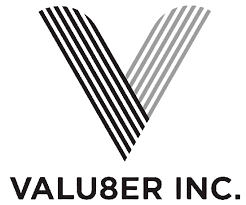By Lucy Saddleton, Managing Editor, ADB
Running a successful personal injury law firm requires a carefully executed business plan, including marketing and branding, hiring the right legal professionals, implementing the best technology – and perhaps most importantly, selecting appropriate third-party partners to support the business.
Attendees at the Legal Innovation Forum’s recent webinar on The business of personal injury law heard from experts in the space about how to define and execute a business strategy and manage finances to ensure sustainable growth in the competitive Canadian market.
Establishing a niche and focusing on that area is the best way for a new personal injury firm to carve out a space for itself amid considerable competition, according to Sandra Zisckind, managing partner at Diamond & Diamond, Canada’s largest personal injury firm.
“Pick an area and hone in on those clientele because you can’t go after everyone. You don’t have the size and you can’t compete with the big firms,” advised Zisckind.
From the perspective of a small boutique litigation firm, Paul Cahill, partner at Ontario-based Davidson Cahill Morrison, has found the niche approach to be very effective. Cahill chose to focus on medical malpractice to fill a gap in the market.
“I saw it as an opportunity, because if you could figure out the business side of it, there was a lot of potential there,” said Cahill. “It’s a tough area of law to litigate so it was easy to get files because personal injury lawyers didn’t want them so they were handing them off like a hot potato.”
MARKETING
While Diamond & Diamond still budgets for traditional advertising including billboards, Zisckind noted that social media is the future of marketing so that forms a significant portion of the firm’s marketing strategy.
Coming up with a solid business strategy which includes a marketing budget is key to avoid burning out too early.
“The problem is, when we go to law school, they don’t teach you about the business of law,” said Zisckind. “In personal injury, you don’t get paid right away, and then you’re put in a competitive space, where you may not break even for years, and then you have to advertise on top of that too, so before you start, really think about the business aspect and sit down and really map it out, because it’s tough,” she advised.
Direct advertising may not always be the best approach, in Cahill’s opinion, so he favours advertising his services in a way that provides useful information to the public, in the form of an advertorial or blog. For example, Cahill writes about recent cases or changes in legislation that are impacting Ontario hospitals and physicians.
ATTRACTING AND RETAINING TALENT
Attracting and retaining talent is also top of mind for personal injury law firms, and forms an important part of the overall business strategy.
As a small firm with around 12 lawyers, Davidson Cahill Morrison strives to give junior lawyers plenty of responsibility and hands-on experience, which includes time spent in court and direct contact with clients.
“They feel like they are basically co-piloting their plane that’s being flown, and for that reason, I think they get good training and experience, and it also allows us to have some sense of their potential,” said Cahill.
At Diamond & Diamond, a profit-sharing model helps to attract and retain talent, together with the option for unlimited commission.
“Giving them that independence and that feeling of participating in the profit of the firm is what’s allowed me to hold on to my lawyers for as long as I have,” said Zisckind.
NAVIGATING FINANCES
Navigating finances amid rising interest rates is a major challenge for smaller personal injury firms, especially in view of deferred fees, disbursements and unpredictable file durations. As a larger firm, Diamond & Diamond is able to self- finance disbursements. However, Zisckind is calling for fewer restrictions and greater clarity from law societies with regard to what is permissible in terms of financing disbursements.
Cahill agreed that the real challenge in personal injury is the lack of predictability of cash flow.
“If you, as a profit center, are getting some bad luck and you just don’t have cash flow for three or four months, that can be a problem, and can result in a crunch where you can have problems making payroll, and the banks are tough when it comes to lending money to personal injury firms,” he said.
Cahill and his partners at Davidson Cahill Morrison have worked hard in recent years to be able to completely self-finance so they no longer rely on a line of credit.
“Managing your overhead as best you can is important, but I think having that tenacity to keep your revenue as stable as possible, and having partners that can help smooth things out is really important,” Cahill said.
Litigation insurance can offer a significant benefit to firms and counter financial headwinds.
“This is your money so why not insure it, especially considering that the insurance premiums themselves can be charged back to your client?” said Nick Robson, president at TheJudge Canada – the Canadian arm of the largest global specialist litigation insurance brokerage. “My suggestion would be to simply avoid disbursement risks as much as possible, and insurance can play a key part in that,” he added.
Another benefit of litigation insurance for personal injury firms is the potential to negotiate better interest rates with the bank, Robson noted.
TECHNOLOGY AS AN ENABLER OF ACCESS TO JUSTICE
Our speakers agreed that technology can play an important role in enabling access to justice – particularly time-saving AI technologies.
“One of the labor intensive parts of my job is going through medical records and screening med mal cases – and it’s tough to delegate that – and so if you have a program that can go through all the medical records and identify certain issues for a lawyer to focus in on, that could save time and give you more time to look at more files,” said Cahill. However, he noted that AI cannot really help with access to justice when it comes to people who struggle to find a lawyer because their cases are not seen as meritorious or economical.
Zisckind added that AI will allow firms to streamline processes and reduce overheads, which in turn will help provide access to justice. She would also like to see the law societies and courts stop reducing contingency fees, to enable firms to take on more cases.
“If we have a real access justice problem and we want to move things ahead, they can’t go after our fees,” said Zisckind.
Robson added that ATE insurance can also be useful in combating the access to justice crisis as it encourages settlements when the defendant knows the plaintiff is backed by their own insurance company and therefore won’t hesitate to take the case all the way.
“It levels the playing field and gives more confidence to the plaintiff,” said Robson. “The plaintiff can’t be bullied into lower settlements, which is going to be good for the plaintiff, and also good for contingency fees for the firm.”
The event ended with presentations from event sponsors Rim Grewal, founder at Expert Valu8er Reports – a valuation software provider – and Nick Robson, president at TheJudge Canada.
Watch the full webinar recording here.







